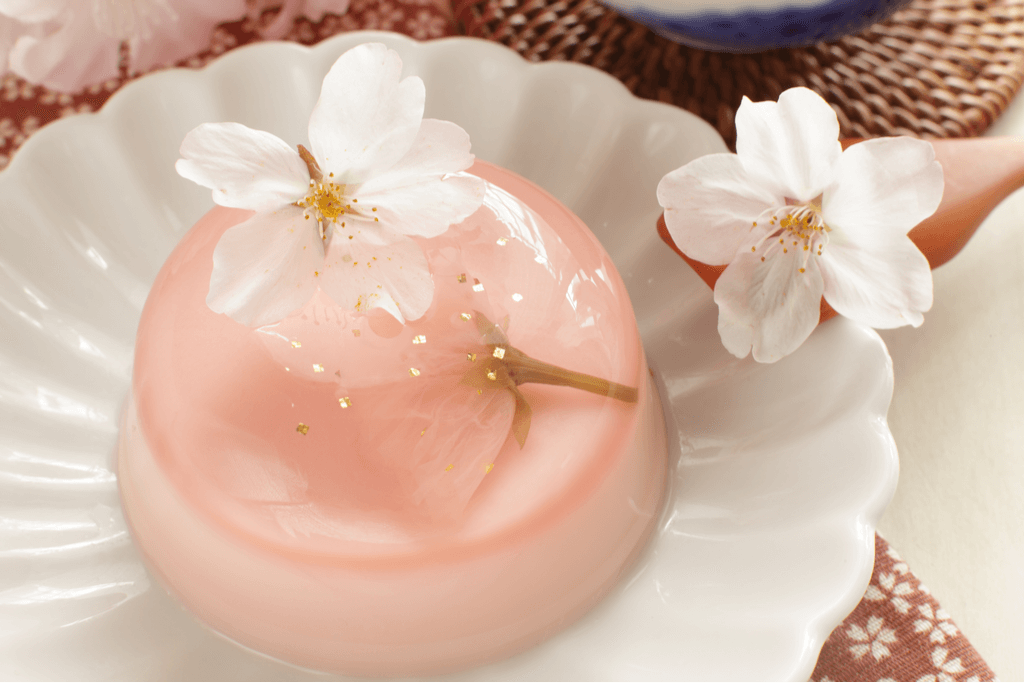Not just a cultural symbol, the national flower of Japan – cherry blossom or sakura – is also skillfully used in cooking to create unique flavors and enhance the attractiveness of traditional Japanese food and drink. If you have never heard of or tasted cherry blossoms before, let’s discover some of the most well-known sakura food and drinks made from this beautiful spring flower!
In order to be used in food or drink, cherry blossoms first go through a stage called “salting”. This stage will help the flowers retain their original color and flavor while helping to preserve them throughout the year.
When the cherry blossoms have bloomed around 70% while the stem is still intact, they will be soaked in white apricot vinegar or apricot juice to keep the color of the flower. Then, the artisans will wash, drain, and incubate the salt for 3-4 weeks. Next, the flowers are dried and stored. At this point, the flowers are ready to be used to prepare some tasty sakura food.
Table of Contents
ToggleSakura Mochi
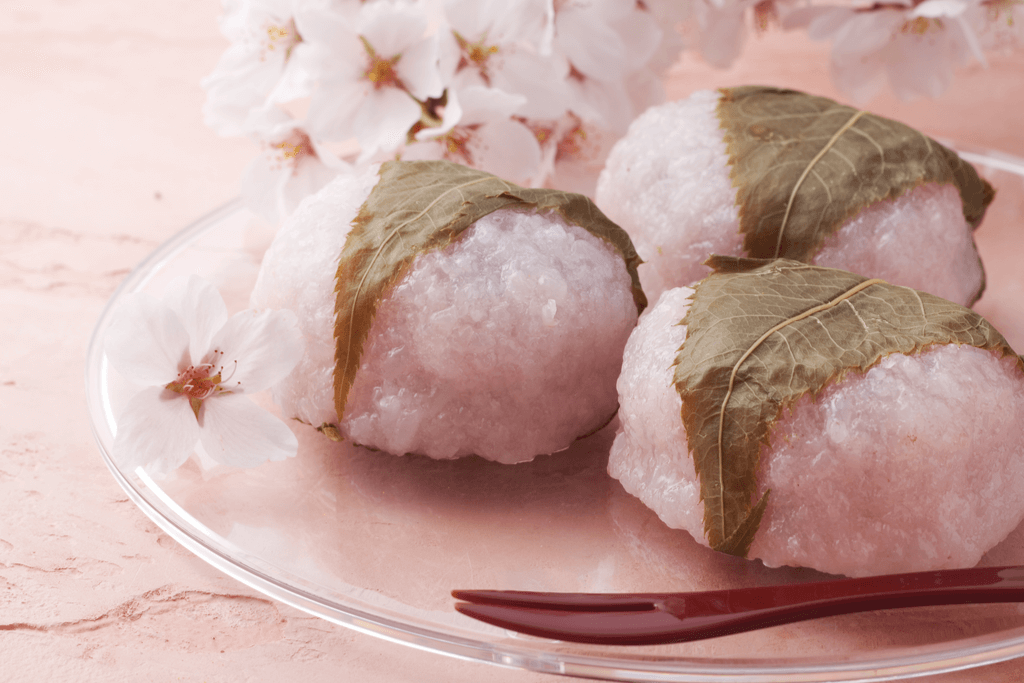
When you mention the words ‘cherry blossoms’ or ‘sakura’, Japanese people instantly think of spring, hanami festivals (sakura viewing festivals) and of course sakura mochi (Japanese pounded rice cake)!
Sakura mochi is the most popular and indispensable Japanese traditional sweet (wagashi) during the sakura season. It is a kind of soft and sticky rice cake, replacing the usual white type with a pink rice cake that covers red bean paste (anko) inside. It is finally wrapped in salty sakura leaves.
There are 2 popular varieties of this popular sakura food. One is Chomeiji mochi, which is famous in the Kanto region made by kneading flour with water, rolling it into thin slices, and baking.
The other is Domyoji mochi – a Kansai-style mochi made from raw rice flour, which is actually glutinous rice that is steamed, dried and pounded. It’s then molded into small balls and steamed.
In addition, the cherry blossom leaf outside is a kind of pickle that you can eat (if you want) and is used to prevent the mochi from getting dry and to add fragrance. If you don’t like it, you can leave it out, with some people just using it as a wrapper to keep their hands from getting sticky.
For Japanese people, there’s nothing better than enjoying the unique salty, sweet flavor and the chewy, smooth dough of sakura mochi while admiring the beauty of a Hanami festival.
Craving for a taste of Japanese spring with cherry blossom inspired food and drink? Sakuraco sends traditional Japanese sweets, snacks, and tableware to your door from Japan every month, so you can enjoy this beautiful spring season with cherry blossom flavored sweets and snacks at your convenience!
Sakura Manju
Sakura manju or cherry blossom dumplings are made from glutinous rice flour with sweet red bean paste. What is the difference between manju and mochi? Check out our other blogs!
The difference from other ordinary dumplings is that the top of the cake has a salted cherry blossom. However, not all flowers can be used, only double-petaled sakura (yaezakura) are used to make this dumpling. After salting, the cherry blossoms still retain their original color and flavor, making the dumplings more beautiful and fragrant.
This rice cake has a small round shape that fits in the palm of your hand, making it very suitable as a snack or dessert to bring with you when hanging out.
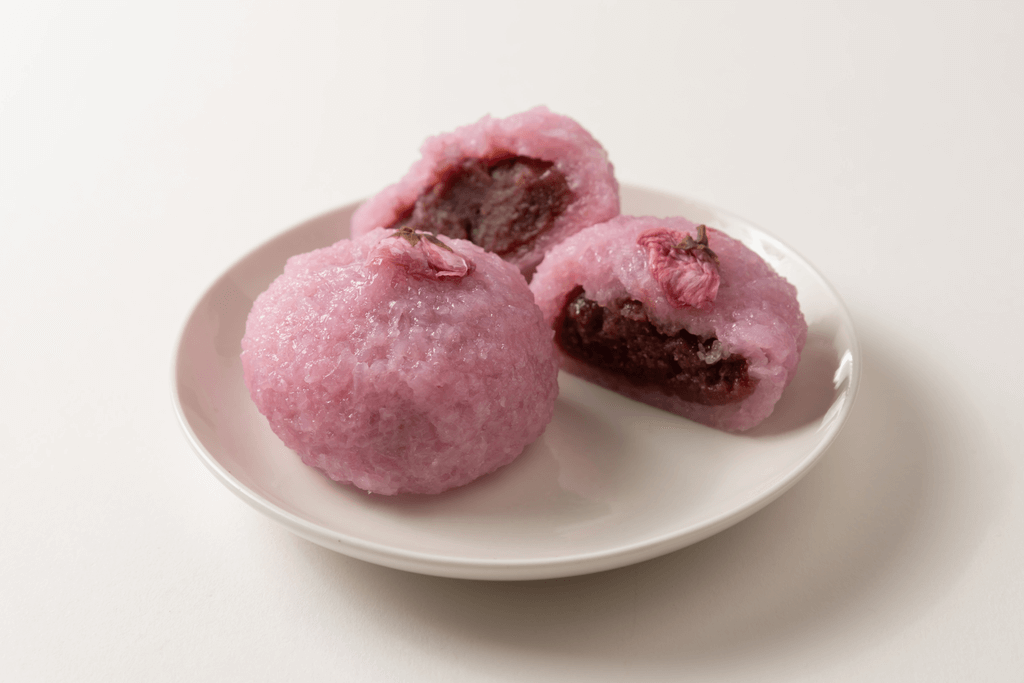
Sakura Yokan
Yokan is another traditional Japanese confection, which originated in China and was brought into Japan around 1191. It is usually made from red bean paste, jelly, and sugar, usually appearing as a jelly-like mass.
Sakura yokan is made with kanten powder (a kind of jelly powder), sugar, and sakura red bean paste (sakura-an). Because there is no particular standard for decoration, the sakura yokan has many different shapes depending on the aesthetic of the maker.
Usually, yokan makers will decorate this sakura food with salted, dried cherry blossoms, but each style of yokan can have a different flower pattern.
This unique jelly is perfect on hot summer days, but since it is a cherry blossom jelly, you should enjoy it in the spring when the cherry blossoms are in bloom!
Sakura Anmitsu
Anmitsu is a Japanese dessert dating back to the Meiji era, made from small cubes of jelly, combined with other ingredients such as mochi, green tea ice cream, red bean jam, syrup, and seasonal fruits. This is also another great sakura food to enjoy on hot summer days.
Combining cherry blossoms with traditional Anmitsu, the Japanese created Sakura Anmitsu by incorporating ice cream made with pure cherry blossom and salted cherry blossom (instead of green tea ice cream) while keeping the rest of the ingredients the same.
The sweetness of red beans combined with the mild taste of sakura ice cream creates a balanced taste anyone from kids to adults can enjoy. During cherry blossom season, you can enjoy this delicious dessert at many restaurants in Japan.
Sakura Cold Noodles
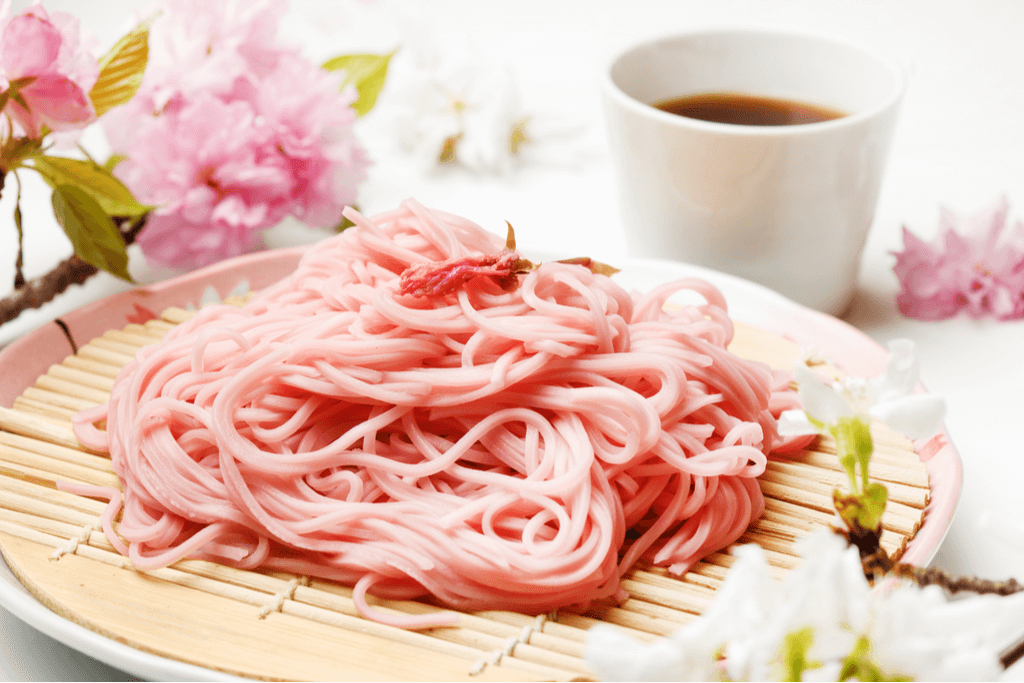
Not only used as a baking ingredient, cherry blossom petals are also ground into powder, then mixed with perilla powder and kneaded with rice flour to create sakura pink cold noodles.
Originally, cold noodle is a famous cooling noodle dish much loved by Japanese people. especially in summer. This type of noodle is often served with Tsuyu dipping sauce. Tsuyu is a combination of soy sauce, mirin (cooking rice wine), Japanese sake (regular rice wine), dried kelp, and dried bonito flakes.
Sakura cold noodles also use this sauce. When enjoying it, you can smell the faint scent of cherry blossoms in the noodles, bringing a refreshing feeling, perfect for a cooling dish on hot days.
Sakura Onigiri
Sakura onigiri are cherry blossom rice balls, a popular Japanese picnic food for Hanami festivals. When cooking rice, people use salted cherry blossoms, so when the rice is cooked, it has a saltier taste. The characteristic of this type of rice ball is its unique pink color and cherry blossom fragrance.
The rice can then be molded into any shape, from the traditional triangular or round ball shape to other fun shapes by using plastic molds.
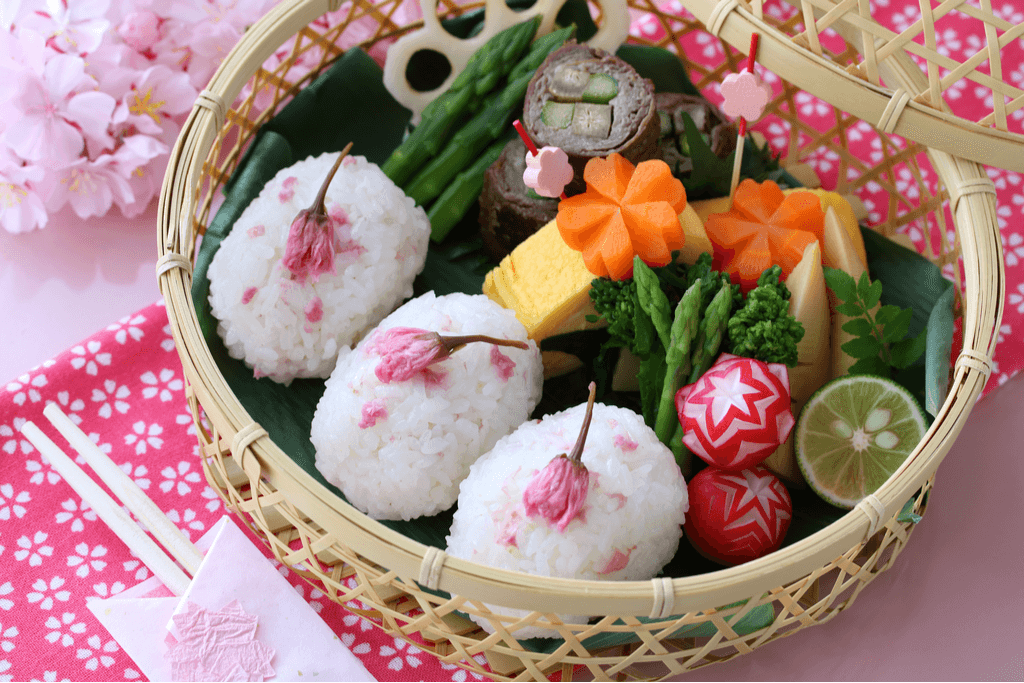
Cherry Blossom Sake
Cherry blossom sake is a must-try drink for the Japanese during cherry blossom viewing. The liquor is made by soaking cherry blossoms in alcohol, giving it the sweet aroma of cherry blossom and adding a unique flavor to the taste of the wine.
Not only being a delicious drink to taste on special occasions, cherry blossom wine is also rich in vitamins A and C, which have the effect of healing and beautifying the skin.
Cherry Blossom Tea
Having plenty of sakura-flavored sweets and foods in spring, cherry blossom tea becomes a perfect accompaniment that anyone can enjoy. It is a traditional Japanese tea made from salted cherry blossom petals.
Cherry blossom tea is often served at weddings because of its pure taste, elegant beauty, and good luck. The taste of it is quite similar to black tea but more subtle thanks to the gentle cherry blossom scent.
If you have the opportunity to come to Japan, don’t forget to enjoy these unique sakura food and drinks, you will surely be surprised by their lovely pink color and unique flavor!

